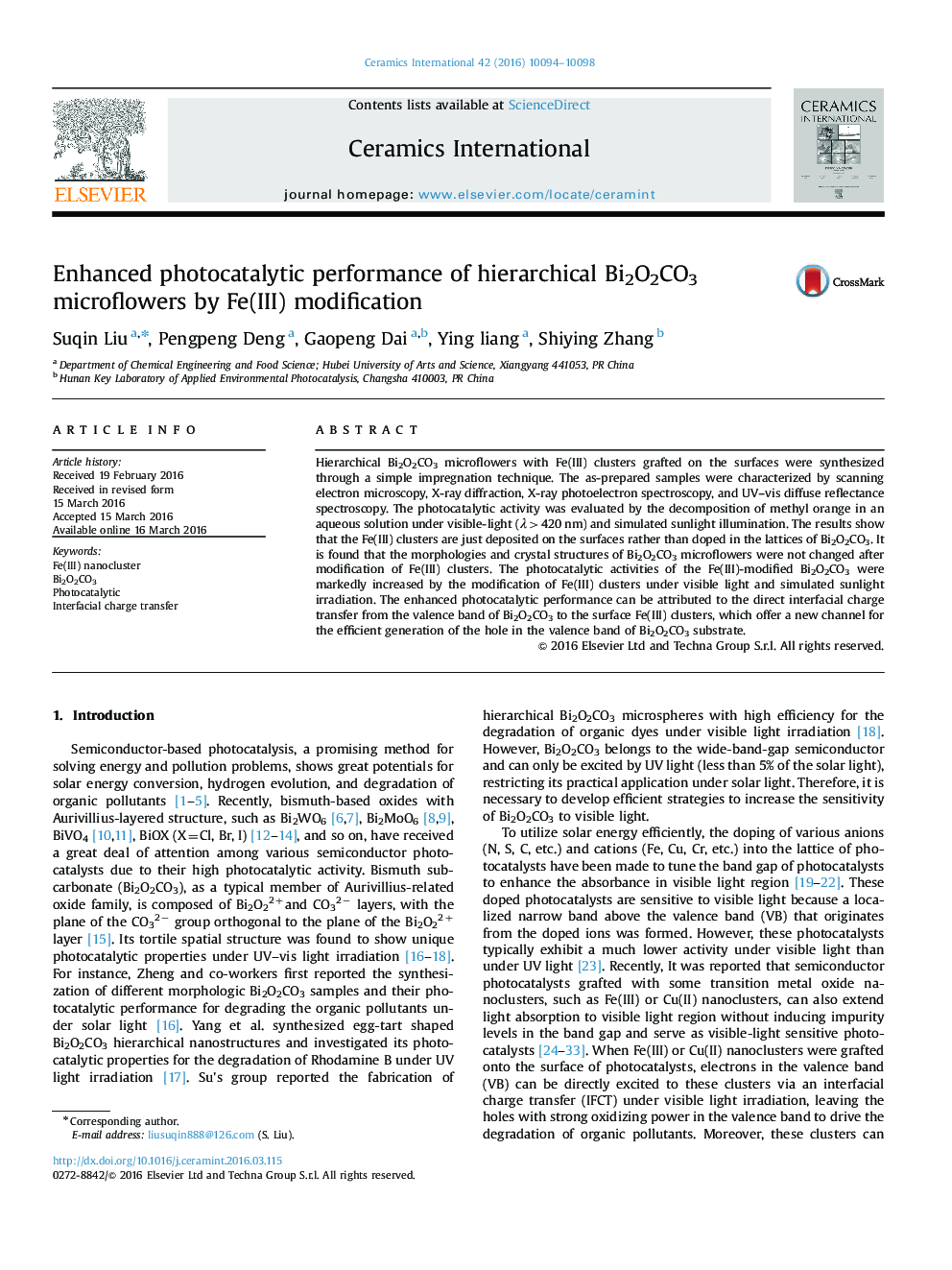| Article ID | Journal | Published Year | Pages | File Type |
|---|---|---|---|---|
| 1459095 | Ceramics International | 2016 | 5 Pages |
Hierarchical Bi2O2CO3 microflowers with Fe(III) clusters grafted on the surfaces were synthesized through a simple impregnation technique. The as-prepared samples were characterized by scanning electron microscopy, X-ray diffraction, X-ray photoelectron spectroscopy, and UV–vis diffuse reflectance spectroscopy. The photocatalytic activity was evaluated by the decomposition of methyl orange in an aqueous solution under visible-light (λ>420 nm) and simulated sunlight illumination. The results show that the Fe(III) clusters are just deposited on the surfaces rather than doped in the lattices of Bi2O2CO3. It is found that the morphologies and crystal structures of Bi2O2CO3 microflowers were not changed after modification of Fe(III) clusters. The photocatalytic activities of the Fe(III)-modified Bi2O2CO3 were markedly increased by the modification of Fe(III) clusters under visible light and simulated sunlight irradiation. The enhanced photocatalytic performance can be attributed to the direct interfacial charge transfer from the valence band of Bi2O2CO3 to the surface Fe(III) clusters, which offer a new channel for the efficient generation of the hole in the valence band of Bi2O2CO3 substrate.
